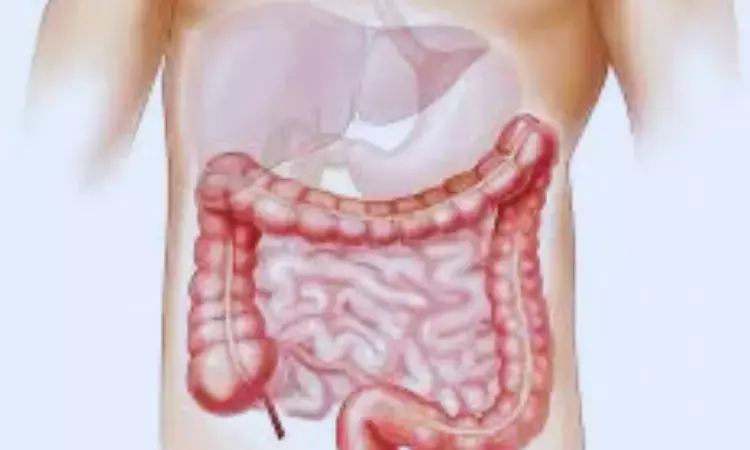- Home
- Medical news & Guidelines
- Anesthesiology
- Cardiology and CTVS
- Critical Care
- Dentistry
- Dermatology
- Diabetes and Endocrinology
- ENT
- Gastroenterology
- Medicine
- Nephrology
- Neurology
- Obstretics-Gynaecology
- Oncology
- Ophthalmology
- Orthopaedics
- Pediatrics-Neonatology
- Psychiatry
- Pulmonology
- Radiology
- Surgery
- Urology
- Laboratory Medicine
- Diet
- Nursing
- Paramedical
- Physiotherapy
- Health news
- Fact Check
- Bone Health Fact Check
- Brain Health Fact Check
- Cancer Related Fact Check
- Child Care Fact Check
- Dental and oral health fact check
- Diabetes and metabolic health fact check
- Diet and Nutrition Fact Check
- Eye and ENT Care Fact Check
- Fitness fact check
- Gut health fact check
- Heart health fact check
- Kidney health fact check
- Medical education fact check
- Men's health fact check
- Respiratory fact check
- Skin and hair care fact check
- Vaccine and Immunization fact check
- Women's health fact check
- AYUSH
- State News
- Andaman and Nicobar Islands
- Andhra Pradesh
- Arunachal Pradesh
- Assam
- Bihar
- Chandigarh
- Chattisgarh
- Dadra and Nagar Haveli
- Daman and Diu
- Delhi
- Goa
- Gujarat
- Haryana
- Himachal Pradesh
- Jammu & Kashmir
- Jharkhand
- Karnataka
- Kerala
- Ladakh
- Lakshadweep
- Madhya Pradesh
- Maharashtra
- Manipur
- Meghalaya
- Mizoram
- Nagaland
- Odisha
- Puducherry
- Punjab
- Rajasthan
- Sikkim
- Tamil Nadu
- Telangana
- Tripura
- Uttar Pradesh
- Uttrakhand
- West Bengal
- Medical Education
- Industry
Colonoscopies in FIT-positive persons should aim for higher adenoma detection rate than primary colonoscopy

A cohort study of adults undergoing a colonoscopy after a positive fecal immunochemical testing (FIT) result suggest that endoscopists performing colonoscopy in FIT-based screening programs should aim for markedly higher adenoma detection rate compared with programs that use colonoscopy as the primary screening intervention. The study is published in Annals of Internal Medicine.
Screening reduces colorectal cancer (CRC) incidence and mortality by early detection and removal of colorectal cancers and polyps. One of the quality indicators for colonoscopies is the adenoma detection rate, which proportion of colonoscopies in which at least one adenoma is detected. Adenoma detection rate is often associated with inverse post-colonoscopy CRC (PCCRC) risk, and many professional societies recommended endoscopists have an ADR of at least 25 percent.
FIT-based screening programs have also become common worldwide. Participants with a positive FIT result have a high prevalence of adenomas, leading to high ADRs for endoscopists performing colonoscopies in this setting. However, it is unknown whether the association between the ADR and PCCRC is also present in colonoscopies performed after a positive FIT result.
Researchers from Erasmus University Medical Center, Rotterdam, conducted a population-based cohort study of 362 endoscopists who performed 116,360 colonoscopies with a median ADR of 67%. In 426 participants diagnosed with PCCRCs, 49% were classified as interval cancer and 51% were classified as noninterval cancer. The authors found that higher ADR was associated with lower PCCRC incidence, and that colonoscopy in FIT-positive persons demands a markedly higher ADR target than primary colonoscopy.
They report that for an endoscopist with an ADR of 60%, the cumulative incidence of interval PCCRC for colonsoscopies performed in response to positive FIT was almost 2 times higher than that of endoscopists with an ADR of 70%. This risk was even higher for endoscopists with ADRs less than 60%, with the expected number of patients diagnosed with interval PCCRC in 5 years was approximately 2 for endoscopists with an ADR of 70%, compared with almost 3.5 for ADRs of 60%, and more than 4.5 for ADRs of 55%.
According to the authors, their findings support the use of ADR, with different targets, as an important quality indicator for endoscopists in FIT-based as well as primary colonoscopy screening programs.
An accompanying editorial from Kaiser Permanent, Oakland, California argues that this study provides an excellent framework for evaluating concepts regarding effective quality metrics and how these can illustrate pathways for meaningful metrics for the care of other cancers and disorders.
He highlights that studies evaluating quality metrics must be trustworthy, important, strategic, relevant, actionable, simple, gaming-resistant, and owned. He also adds that questions concerning goals, plans for implementation of interventions, and the application of goals while maintaining simplicity must be considered in metric development.
Reference:
Pieter H.A. Wisse, Nicole S. Erler, Sybrand Y. de Boer, et al; Adenoma Detection Rate and Risk for Interval Postcolonoscopy Colorectal Cancer in Fecal Immunochemical Test-Based Screening: A Population-Based Cohort Study. Ann Intern Med. [Epub 27 September 2022]. doi:10.7326/M22-0301
Dr Kamal Kant Kohli-MBBS, DTCD- a chest specialist with more than 30 years of practice and a flair for writing clinical articles, Dr Kamal Kant Kohli joined Medical Dialogues as a Chief Editor of Medical News. Besides writing articles, as an editor, he proofreads and verifies all the medical content published on Medical Dialogues including those coming from journals, studies,medical conferences,guidelines etc. Email: drkohli@medicaldialogues.in. Contact no. 011-43720751


